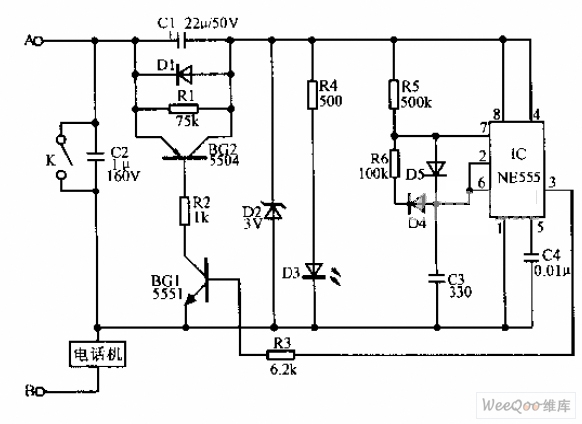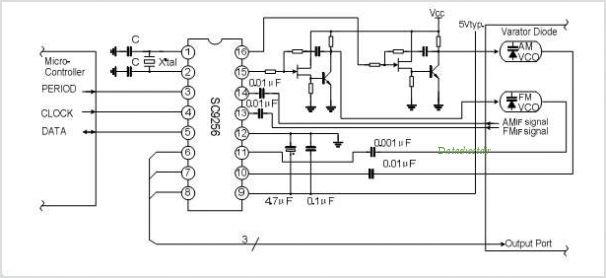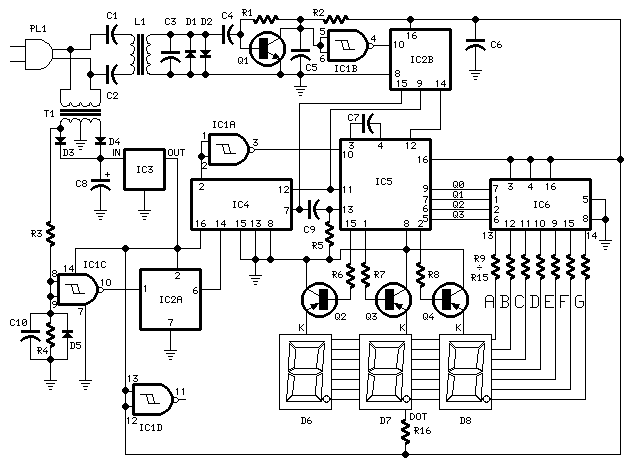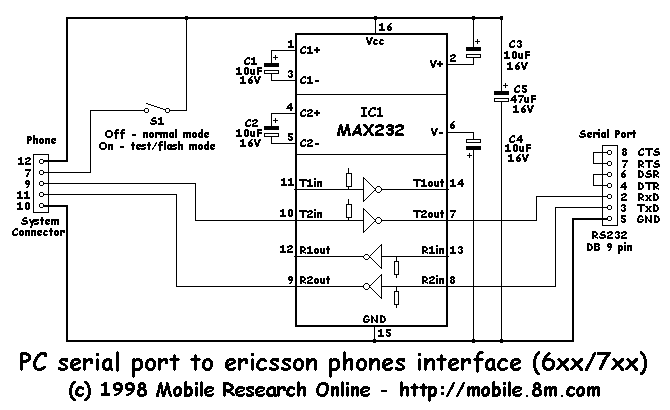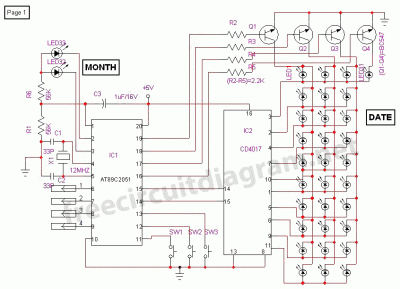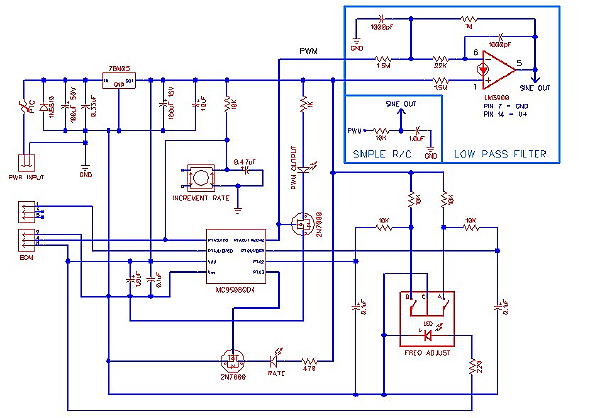
Phone digital answering machine
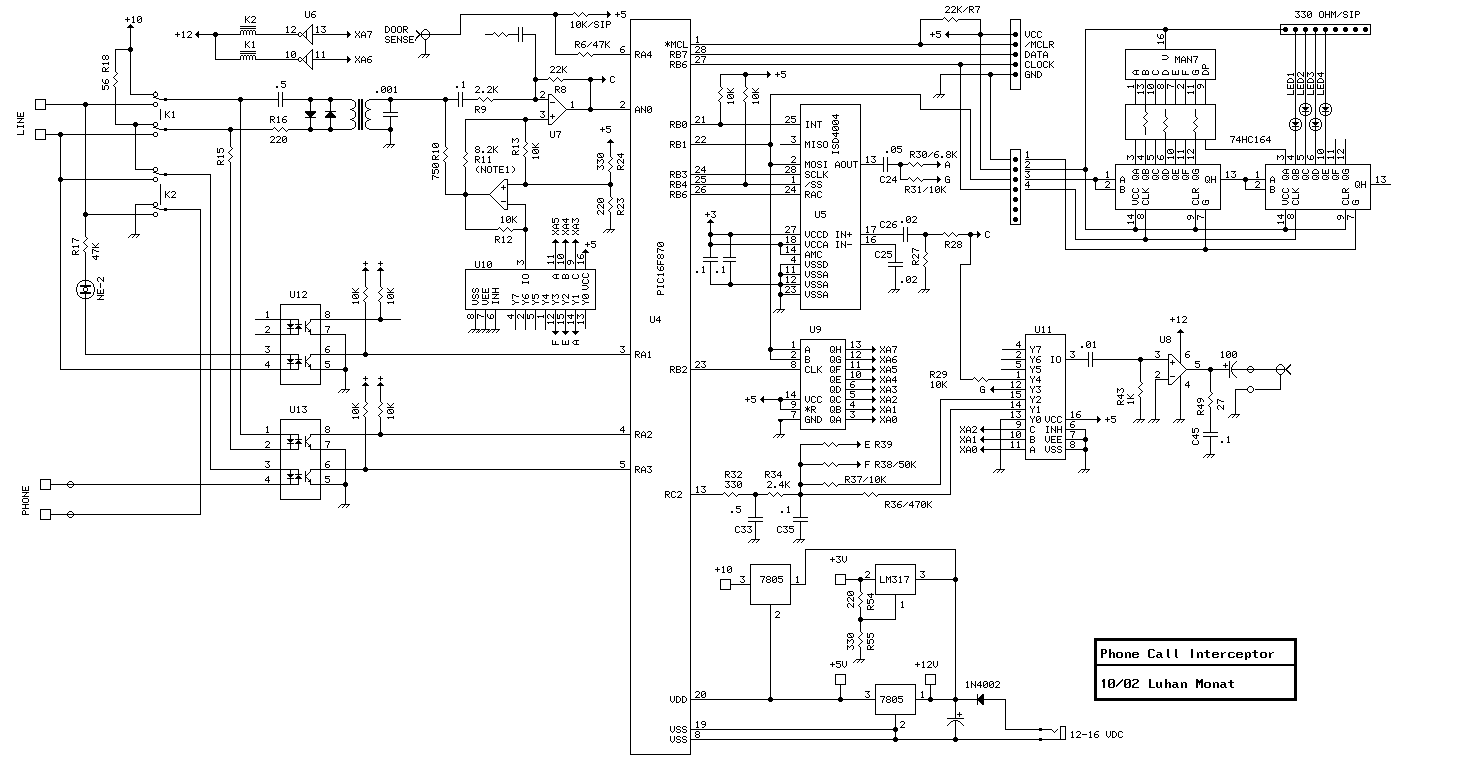
This unit is an upgrade of the previous phone call interceptor. Instead of using an answering machine to provide the outgoing message and recording functions, it uses the ISD4004 (from Windbond Electronics). The ISD4004 records up to 8 minutes of audio. I use the first several seconds for outgoing message prompts. The remaining time is used to record up to 30 messages, depending on message length. When a call comes in it prompts the caller to enter the access code or to hit '0' to leave a message. If the proper code is entered, the device 'rings' an external speaker and waits for a phone to be picked up. If the phone is not picked up after several rings, it says 'good bye' and hangs up the line.
The caller can hit '0' at any time to leave a message. The message time is limited to 40 seconds.
Any of several phone extensions plugged into this device can be used to retrieve messages. The messages are played out thru any phone. They can also be accessed remotely by calling in and entering the 'secret' access code.
For now, I am just providing the schematic and source file for this project. Later, I hope to elaborate on the details of the design.
The circuit utilizes the ISD4004 voice recording and playback IC, which is central to the functionality of the device. The ISD4004 allows for the recording of audio messages and prompts, with a maximum recording time of 8 minutes. The configuration of the ISD4004 should include appropriate power supply connections, typically +5V, and ground. The audio input for recording can be connected to a microphone, while the audio output is routed to an external speaker for playback.
The incoming call detection is achieved using a telephone line interface circuit, which may include components such as a relay or opto-isolator to safely interface with the high-voltage telephone line. The circuit should include a microcontroller or a dedicated logic circuit to handle the incoming call signals and user inputs. When a call is detected, the system prompts the caller to enter an access code or press '0' to leave a message.
The access code validation can be implemented using a keypad interface or through DTMF (Dual-Tone Multi-Frequency) detection, depending on the design choice. If the correct access code is entered, the circuit activates the external speaker to signal the user to pick up the phone. If the phone is not answered after a predetermined number of rings, the device plays a 'good bye' message and disconnects the call.
For message retrieval, the circuit should include a mechanism to allow any connected phone extension to access stored messages. This can be achieved through a simple touch-tone interface or remote access via a phone call, where the user enters the access code to listen to the messages. The message playback is handled through the ISD4004, which can be triggered by the microcontroller based on user inputs.
Overall, the design requires careful consideration of the power supply, signal processing, and user interface components to ensure reliable operation and ease of use.This unit is an upgrade of the previous phone call interceptor. Instead of using an answering machine to provide the outgoing message and recording functions, it uses the ISD4004 (from Windbond Electronics). The ISD4004 records up to 8 minutes of audio. I use the first several seconds for outgoing message prompts. The remaining time is used to record up to 30 messages, depending on message length When a call comes in it prompts the caller to enter the access code or to hit '0' to leave a message. If the proper code is entered, the device 'rings' an external speaker and waits for a phone to be picked up.
If the phone is not picked up after several rings, it says 'good bye' and hangs up the line. The caller can hit '0' at any time to leave a message. The message time is limited to 40 seconds. Any of several phone extentions plugged into this device can be used to retrieve messages. The messages are played out thru any phone. They can also be accessed remotely by calling in and entering the 'secret' access code. For now, I am just providing the schematic and source file for this project. Later, I hope to elaborate on the details of the design. 🔗 External reference
The caller can hit '0' at any time to leave a message. The message time is limited to 40 seconds.
Any of several phone extensions plugged into this device can be used to retrieve messages. The messages are played out thru any phone. They can also be accessed remotely by calling in and entering the 'secret' access code.
For now, I am just providing the schematic and source file for this project. Later, I hope to elaborate on the details of the design.
The circuit utilizes the ISD4004 voice recording and playback IC, which is central to the functionality of the device. The ISD4004 allows for the recording of audio messages and prompts, with a maximum recording time of 8 minutes. The configuration of the ISD4004 should include appropriate power supply connections, typically +5V, and ground. The audio input for recording can be connected to a microphone, while the audio output is routed to an external speaker for playback.
The incoming call detection is achieved using a telephone line interface circuit, which may include components such as a relay or opto-isolator to safely interface with the high-voltage telephone line. The circuit should include a microcontroller or a dedicated logic circuit to handle the incoming call signals and user inputs. When a call is detected, the system prompts the caller to enter an access code or press '0' to leave a message.
The access code validation can be implemented using a keypad interface or through DTMF (Dual-Tone Multi-Frequency) detection, depending on the design choice. If the correct access code is entered, the circuit activates the external speaker to signal the user to pick up the phone. If the phone is not answered after a predetermined number of rings, the device plays a 'good bye' message and disconnects the call.
For message retrieval, the circuit should include a mechanism to allow any connected phone extension to access stored messages. This can be achieved through a simple touch-tone interface or remote access via a phone call, where the user enters the access code to listen to the messages. The message playback is handled through the ISD4004, which can be triggered by the microcontroller based on user inputs.
Overall, the design requires careful consideration of the power supply, signal processing, and user interface components to ensure reliable operation and ease of use.This unit is an upgrade of the previous phone call interceptor. Instead of using an answering machine to provide the outgoing message and recording functions, it uses the ISD4004 (from Windbond Electronics). The ISD4004 records up to 8 minutes of audio. I use the first several seconds for outgoing message prompts. The remaining time is used to record up to 30 messages, depending on message length When a call comes in it prompts the caller to enter the access code or to hit '0' to leave a message. If the proper code is entered, the device 'rings' an external speaker and waits for a phone to be picked up.
If the phone is not picked up after several rings, it says 'good bye' and hangs up the line. The caller can hit '0' at any time to leave a message. The message time is limited to 40 seconds. Any of several phone extentions plugged into this device can be used to retrieve messages. The messages are played out thru any phone. They can also be accessed remotely by calling in and entering the 'secret' access code. For now, I am just providing the schematic and source file for this project. Later, I hope to elaborate on the details of the design. 🔗 External reference
Warning: include(partials/cookie-banner.php): Failed to open stream: Permission denied in /var/www/html/nextgr/view-circuit.php on line 713
Warning: include(): Failed opening 'partials/cookie-banner.php' for inclusion (include_path='.:/usr/share/php') in /var/www/html/nextgr/view-circuit.php on line 713
